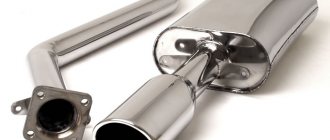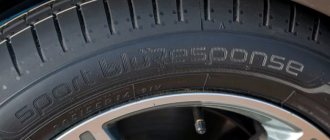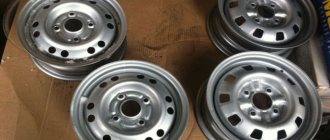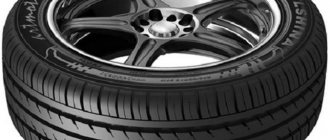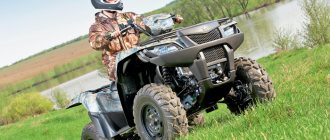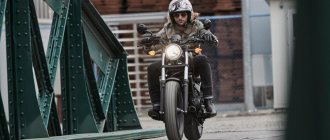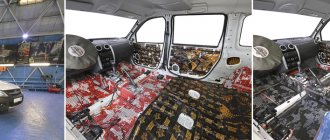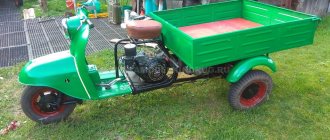What is wheel arch sound insulation?
In general, most modern cars are equipped with special layers at the production stage that block the penetration of sounds from the wheel arches into the interior. However, sound insulation on cars of earlier versions is not installed at the factory. Therefore, drivers have to do the sound blocking of their “iron horse” themselves.
Its essence lies in the fact that some material is placed in certain places to soundproof the arches of the car, which practically does not conduct sounds. You can do this yourself or trust the professionals. However, it is worth considering that soundproofing wheel arches is a fairly simple process that almost anyone can handle. And the mechanics will have to pay a lot of money.
Wheel arches are one of the noisiest places in a car.
Soundproofing options for arches
If you nevertheless decide to make noise-insulated fender liners yourself, then you need to know all the ways to install it.
Fortunately, there are not many of them, only two:
- installation from the outside;
- installation from the inside.
For each method of soundproofing car arches, appropriate tools, materials and installation methods are selected. We recommend that you read them in more detail below.
Internal sound insulation of wheel arches
In general, this method is quite difficult. After all, you will have to carry out installation from the engine compartment. To soundproof the wheel arches, you need to clean their surface and then degrease it. Next you need to apply a vibration damper.
Pay special attention to the coating. It should be close to 100%; in the case of soundproofing arches, there can be no talk of 70% or even 80%. The last step is that you need to stick a sound-absorbing layer on top of the vibration damper.
Appropriate tools are selected for each method of soundproofing car arches
Sound insulation from the outside
Most often, people who want to make noise insulation on their own use this method. It is easy to perform and does not require special tools or skills. How to make insulation from outside sounds with your own hands will be discussed below.
Do not forget that those areas that were not covered with sound-absorbing material must be treated with an anti-corrosion compound. Also, if you decide to use splen, it should be thicker than 8 mm.
How to soundproof arches on a Lada Granta?
Before we start working with our arches, I recommend reading our previous materials on the topic of sound insulation, namely sound insulation of doors and trunk on the Lada Granta.
To work, you will need to purchase STP Vibroplast Silver material and its analogues, no more than 2 millimeters thick. Optionally you can also buy STP Splen 4mm. If you decide to apply Splen on top of Vibroplast, prepare also aluminum tape, which will need to be used to glue sections of the material. Splen itself does not absorb moisture, however, moisture can sometimes enter sections and, consequently, the development of rot in the material.
Splen
STP Silver
We release the fender liner from the fastenings; for this you will need a Phillips screwdriver, torx heads and a 10mm wrench. Next, you need to clean it from dust that somehow gets into the voids between the fender liner and the wing, as well as from any other contaminants. If your arches were previously treated with anti-corrosion agents, then you can use White Spirit to remove them from the surface of the fender liner.
My fender liner
After cleaning the fender liner, apply STP Vibroplast Silver to it. It makes no sense to cover 100% of the surface; pay more attention to those parts that “look” into the interior and the rest of the central parts of the part.
We apply Vibroplast
Then, if you decide to also use Splen, apply it and seal the sections of the material with aluminum tape so that there are no bubbles or empty cracks left.
After work, we return the cover to its place and enjoy the result.
Regarding the amount of material needed for the work, if you follow our instructions, then for one fender liner you will need about half a sheet of Vibroplast and a quarter of a standard roll of Splen.
Liquid sound insulation
Liquid sound insulation allows you not only to protect the interior from unnecessary sounds, but also to prevent the appearance of rust on the car’s wheel arches.
Installation of such a coating is quite difficult, so it is extremely important to do everything in strict order:
- It is necessary to remove the bumpers and wheels from the car, do not forget to place the car on several jacks.
- The surface of the arches must be treated with a special degreasing solution.
- The noise insulator should be applied in even layers using a sprayer.
- Liquid sound insulation will take some time to dry. After it dries, you need to install additional plastic fender liners.
Additional sound insulation of arches
Cars in the budget segment, as a rule, are equipped with standard, inexpensive tires that are far from good parameters in terms of noise level, which, coupled with low basic sound insulation, produces discomfort while in the car at high cruising speeds. Lada Granta was no exception, but we know ways to reduce noise from wheel arches and are ready to share with you.
The car comes standard with front lockers, but new models have felt fender liners on the rear arches, which already have good noise absorption parameters. In general, the presence of any locker, even a plastic one, already significantly reduces the noise level when driving in a car, however, a plastic locker is not without its drawbacks. When driving on an asphalt road, in a dusty area, or during rain or snowfall, everything that flies from under the wheels of the car hits the echoing plastic and creates non-functional noise. To get rid of this disease, you need to make the locker heavier and make it more monolithic. Please note that this article will focus on external treatment; sound insulation on the interior side is a reason for a separate discussion, and it is best to combine such work with sound insulation of the interior floor.
Required materials: Phillips screwdriver, Torx T20 and Torx T30 bit, wrench 8, jack, wheelbrace, degreaser (Galosha gasoline or White Spirit), utility knife, metal rolling roller, soundproofing material.
First of all, we remove the wheel from the car for the convenience of the process and dismantle the mudguards, if any. To do this, you need to use Torx T20 and Torx T30 bits. To ensure safe operation, we recommend that you place the vehicle on a firm support and do not rely solely on the jack.
The next step is to remove the locker itself by unscrewing the fastening screws around the perimeter and under the bumper. To do this, you will need an 8" wrench or socket and a Torx T20 bit. We carefully clean the removed locker from dirt and anticorrosive residues, using solvents or degreasers.
Thanks for subscribing!
We apply a material similar to STP Silver to the plastic surface of the locker; it is not advisable to use heavy materials, since they will not give a greater effect, and the load on the locker attachment points will increase significantly. It is necessary to cover approximately 60% of the surface or until it stops dullly responding to tapping on the locker. On average, one locker uses half a standard sheet of 0.53x0.75cm.
Optionally, you can also use Splen 2-4mm on top of vibration isolation, since Splen is not hygroscopic and is not afraid of moisture, but if you decide to use a similar material, be sure to glue the cut areas of the material with aluminum tape to hide open cuts where moisture can get in and destroy the material . A similar positive effect will be produced by treating the car arch with bitumen mastic with a soundproofing effect; such preparations are sold in any department of automotive varnishes or paints. Before applying anti-corrosion agents, we recommend that you visit a high-pressure washer with the lockers removed so that you can thoroughly rinse off any contaminants.
We perform the assembly in the reverse order and carry out a similar operation on all four arches. Such improvements will have a qualitative impact on the noise level in the car; driving over rough terrain, crushed stone, snow or puddles will no longer bother you with unnecessary details about the quality of the coating under the wheels of your car.
How to make soundproofing of car wheel arches with your own hands
Soundproofing a car with your own hands is much easier than it seems at first glance. It is important to prepare the required materials and tools in advance. And then strictly follow the instructions provided.
If you are not confident in yourself, but want to do it yourself, then it is advisable to consult a specialist. And it’s even better to carry out all manipulations under the supervision of a friend who knows how to do sound insulation.
This article will discuss instructions for installing sound insulation for wheel arches externally.
Required tools and materials
It is recommended to prepare tools and materials for soundproofing wheel arches in advance. Tools can usually be found in any driver's garage.
Do-it-yourself noise insulation of car wheel arches
For installation you will need:
- jack;
- screwdriver;
- knife;
- brushes, can be replaced with a miniature roller;
- latex gloves.
It is recommended to wear rubber gloves before starting work. Material for soundproofing wheel arches is not difficult to find.
You will need the following:
- sheet sound insulator;
- degreaser;
- vibration absorber.
You can buy them at almost any car store. Prices are not high, ranging from 1000-2000 rubles.
Step-by-step instructions for carrying out work
Do-it-yourself noise insulation of wheel arches is best done from the outside.
Try to strictly follow the instructions below:
- it is necessary to remove the wheel;
- if there is a locker, then it is also best to remove it;
- now you need to remove the factory sound insulation from the arches;
- it is also necessary to remove the anti-corrosion coating;
- degrease the surface;
- Next you need to apply a vibration absorber;
- If desired, you can glue a sheet of sound insulator.
The process is quite simple. However, if you are doing this for the first time, we recommend that you carry out the installation under the supervision of a more experienced friend. This way you can avoid mistakes, and in the future you won’t have to pay for car repairs.
The main sources of noise in a car are the engine compartment and wheel arches. To achieve maximum silence in the cabin, you need high-quality sound insulation, which, as a rule, is only available on premium cars.
Budget car models cannot boast of this. In this regard, many car owners are thinking about additional sound insulation .
Reviews after soundproofing lockers
To show the approximate effect of soundproofing the wheel arches of a car, a stand was constructed. The speaker that reproduces road noise was covered:
- metal box;
- a box covered with vibration isolator;
- box, which is glued with vibration-absorbing and sound-proofing materials.
The test results can be seen in the video:
Tests by ZaRulem magazine showed that installing fender liners (with shvi) reduces road noise. Using the Lada Vesta as an example, the noise level in the cabin decreased by 0.8-1.6 dB.
What is good about this modification of lockers?
- Save time. First of all, we reduce the noise from the wheels without disassembling the car interior;
- Efficiency. We make noise insulation from the outside, as close as possible to the noise source;
- Low price. We process a small area, which allows us to save on materials.
To reduce the noise level in the cabin by 2-4 dB (a difference of 1 dB is barely noticeable or unnoticeable at all), it is necessary to approach sound insulation of the car comprehensively, work on all parts of the body (floor, doors, roof, trunk, etc.). ), wheel arches and fender liners. Also, on LADA cars it would be a good idea to install additional door seals (instructions for XRAY, Vesta, Granta/Kalina/Priora, Largus and Lada 4x4).
Method one: External sound insulation of wheel arches
External sound insulation refers to the technology of treating wheel arches from the street side. It is important to correctly select the most suitable material for this purpose and, following technology, apply it to the metal of the body.
Wheel arches are most susceptible to external influences from aggressive environments in the form of dirt, moisture, and reagents . As a result, incorrect selection and installation of vibration and noise insulation material can lead to corrosion.
Liquid mastics for arches
Soundproofing wheel arches with mastic
Soundproofing arches from the outside with mastic is a basic method. Special rubber-bitumen mastics applied to the cleaned and degreased surface of the arches in several layers perform both a noise-insulating function and create an anti-corrosion effect, and quite effectively.
Important! Each layer of mastic must dry thoroughly before applying the next one.
Sheet materials for soundproofing arches
In addition to treating the arches with rubber mastics, we recommend using sheet material - a vibration filter, glued to the entire surface of the wheel arch.
Method two: Internal sound insulation of wheel arches
Interior sound insulation of wheel arches
It is impossible to achieve the maximum effect by doing only external sound insulation of the arches. To do this, paste the inside of the body over the entire metal area above the wheel arches with a special sound-proofing material.
We recommend using products manufactured under the Standartplast brand for this.
This is a rather labor-intensive process that includes:
- • dismantling of the casing;
- • cleaning from traces of dirt and degreasing;
- • cutting and pasting with vibroplast or vibrofilter;
- • laying an additional soundproofing layer (Izolon);
- • reinstallation of internal trim elements.
| The cost of work on internal sound insulation of wheel arches in Autostudio can be calculated in a convenient calculator |
Conclusion
Noise insulation of wheel arches requires an individual approach to each car. Only with the help of high-quality materials, an integrated approach to the organization of noise protection and the experience of the craftsmen carrying out such work, can you achieve maximum silence in the car interior . And most importantly, do not harm the metal and internal elements of the body trim.
Before installing sound insulation both outside and inside the car, call us at the numbers listed on the website and get detailed advice about the materials used in the Autostudio and the cost of the work. You can also sign up for installation at a time convenient for you.
Content
Tools and materials for soundproofing wheel arches
Sound insulation of arches inside the cabin
How to make noise insulation of wheel arches with your own hands from the outside without installing fender liners
Sound insulation of wheel arches from the outside, with installation of fender liners
Liquid external sound insulation of car arches
Expert recommendations
Every car enthusiast, regardless of the age and size of his car, wants to feel comfortable and protected in the cabin. Extraneous noise always bothers both the driver and passengers of the vehicle. Sound insulation of problem areas of the car will help solve the problem of excessive noise. The wheel arches are exactly such a place. In them you can hear the external sounds of tires rolling on the road, pieces of road surface hitting metal, engine operation and suspension sounds.
There are several ways to achieve noise isolation:
- soundproof fender liners (lockers) (bitumen insulation);
- soundproof the wheel arches from the outside (combined insulation);
- soundproof the wheel arches inside (liquid, bitumen, combined insulation);
- use “liquid” fender liners (liquid insulation).
You can perform noise insulation of your car in a salon or service station, or you can also make efforts yourself. It is necessary to take into account that all work must be carried out in a warm, dry garage/box or in the warm season. The choice of materials for sound insulation should be based on climatic conditions (humidity, temperature changes) of vehicle operation and the aggressiveness of the influence of the external environment (salt/acid). Also keep in mind that the mechanical loss coefficient should be maximum.
The source of the highest noise level is the wheel arches
Tools and materials for soundproofing wheel arches
Depending on the method you choose to soundproof wheel arches with your own hands, you may need the following tools:
- jack;
- screwdriver;
- wheel wrench;
- knife;
- brushes and roller;
- latex gloves.
Materials:
- foil sheet sound insulator (a material similar in appearance to foam rubber, covered on one side with a layer of foil);
- liquid sound insulation (mastic) for application with a brush;
- liquid rubber mastic for application from a spray bottle;
- rags;
- degreaser (preferably containing acetone);
- vibration absorber (adhesive surface with a bitumen-mastic base that dampens body vibrations from the engine and suspension elements).
Materials for Shumka
The table below shows the types of materials for sound insulation on the Lada Grant.
| Vibro | Sound-absorbing | Soundproofing/casing materials |
| BiMast, Super or Bomb is a series of the latest materials manufactured using modern technologies. Base – bitumen and mastic | The accent is a material that looks more like a needle-pierced surface. The base is foamed polyethylene. Absorbs noise very well, as it has an open-cell structure | Vibroton – made on the basis of B-polyethylene. Covered with a mixture of bitumen and other substances |
| Standard - fabric-coated material, the thickness of which is 3 mm, and the weight per 1 square meter is 4.2 kg | Isotone is a material based on B-polyurethane. Covered with a special film | The barrier - the basis of this material - is foamed polyethylene. |
| Vibroplast is a very flexible and elastic material. It perfectly absorbs various vibrations, and is a polymer composition (it is self-adhesive). Material connected with aluminum foil | Splen - made on the basis of fine-pored B-polyethylene. It is a good heat insulator. Has an adhesive mounting layer | |
| Vibroplast Silver is a material belonging to the “new” category. The thickness of the material is 2 mm | Bitoplast is a material that is perfect for compaction and copes well with squeaks. It has a liquid layer based on polyurethane foam. The thickness of the material is 5-20 mm. There is a special impregnation that gives the material water resistance and durability. Recommended by experts as the best option for improving sound absorption properties | |
| Vibroplast Gold is the same from the “new” series. Slightly thicker than Silver | Madeleine is a sealing material and more decorative. The base is fabric (black). Thickness – 1.5 mm | |
| Vizomat MP – with foil coating. Excellently absorbs vibrations. Its thickness is 2.7 mm, and its weight is 4 kg/sq. |
"Vibro"
Vibration-absorbing materials or simply “vibra” are recommended to be applied to the metal parts of the body of the Grant and any other car. The power unit, transmission and suspension elements - all this and also uneven road surfaces and air resistance cause body parts to creak and make sounds unpleasant for the driver's hearing.
Soundproofing frets grants
To understand how the "vibe" manages to absorb such strong vibrations, one must study the basic physics regarding internal friction. The so-called conversion of vibration energy into heat occurs.
Note. Using the special materials shown in the table, you can achieve the best effect. All materials presented in the first vertical column of the table have an adhesive mounting layer that allows them to be easily applied to metal surfaces. In addition, such materials also have sealing properties, due to which the body is reliably protected from corrosion.
All materials belonging to the “vibro” category are based on bitumen or mastic. They may or may not have a layer of aluminum foil.
Note. As for the materials from the Bimast series, they have two layers - bitumen and mastic.
Sound absorbers
ZPMs are designed to absorb noise that is transmitted through the air. Basically, this category presents materials with a porous base. They can also be coated or uncoated.
Note. It is recommended to install these materials in places directly close to noise sources. Let us note one more additional property of materials in this category – low thermal conductivity.
Sound insulators
Soundproofing materials perfectly insulate the interior of the Granta and other cars from outside noise. They represent a kind of barrier that stands in the way of noise spreading in the air.
Note. These materials are more often used as a second layer applied to the “vibro”.
Gaskets
Gasket materials ideally eliminate squeaks and vibrations of parts.
Sound insulation of arches inside the cabin
Progress:
- clean and degrease the surface for pasting;
- cover the entire surface with vibration insulation;
- After drying, cover the vibration insulation with noise absorber.
Pasting must be carried out very carefully, pressing the sound absorber well with a roller so that bubbles and gaps do not form between the joints.
How to make noise insulation of wheel arches with your own hands from the outside without installing fender liners
Progress:
- if fender liners are installed on the car, they need to be removed;
- remove the factory sound insulation, if any;
- thoroughly clean the factory anti-corrosion coating and wash away the dirt;
- dry and degrease the entire surface of the arches;
- protect the transmission elements from contact with mastic with film;
- apply a liquid two-component anti-corrosion sound insulator;
- cover the surface with vibration isolator on the side adjacent to the body;
- stick a foil sound insulator on top of the vibration isolator;
- Apply liquid mastic to the outer unglued surface of the arches to avoid corrosion.
We very carefully and thoroughly clean the arch from all unnecessary and unnecessary elements in the form of dirt, rust and other undesirable elements
Soundproofing the trunk of a Lada Granta
Today we continue to publish reports on the sound insulation of the Lada Granta. It's no secret that budget cars, which Granta is, are not distinguished by high-quality and advanced sound insulation, but with our help you can make your stay in the car comfortable and convenient. This article will talk about soundproofing the trunk with your own hands.
Car soundproofing technology is the same for all brands and types of cars, however, specific cases have their own characteristics. In the case of the Lada Granta, the whole process begins with dismantling the trunk trim. Next, the entire work surface needs to be cleaned and degreased; White Spirit is suitable for this.
Installation of sound insulation on a Lada Granta begins with vibration-isolating material (in this example, sheet vibration-insulating material similar to STP is used). We cut out soundproofing sheets of a suitable size (the larger the pieces, the better), and heat the bitumen side with a technical hair dryer. Then we glue the “vibra” onto the cleaned metal of the body, and roll out the sheet with a hard (plastic/iron) roller. We apply the next sheet of vibrating material with an overlap.
As a second layer of sound insulation, it is customary to use an accent or BiPlast (sound-absorbing material) or SPLEN (more heat-insulating material). They all have a self-adhesive backing, so there will be less fuss with the second layer. We cover 100% of the surface to get maximum effect. The only exceptions are technological openings, these include openings for interior ventilation.
Soundproofing the arches brings the greatest effect, because all the noise from the wheels is transmitted through them. Therefore, if you decide to cover not the entire surface of the trunk with soundproofing materials, then do not skimp on the wheel arches. Then assemble in reverse order. Let us recall that in the previous article we looked at the sound insulation of the wheel arches on the Grant, which will help make the car quieter and more comfortable.
Soundproofing of the trunk lid is optional; all the same materials are used. Here it is worth paying attention to the entire cover, which will increase significantly after sticking the vibrating material.
Video. Trunk noise insulation Grants
As a result, doing this type of soundproofing with your own hands alone will take you about 7 hours. In this case, to completely cover the trunk of a Lada Grant, 17 sheets of vibration isolation and about 8 m2 of splenium were required.
Sound insulation of wheel arches from the outside, with installation of fender liners
In this case, the fender liners serve not only as protection against dirt, but also as a shield against noise. In addition to the actions described above, you need to pay special attention to the fender liners:
- dismantle them;
- clean and degrease;
- treat them with a vibration isolator;
- do not cover technical openings;
- cover with vibration isolator on the inside;
- You can (optionally) stick a foil sound insulator onto the vibration isolator using the method described above;
- To install fender liners, it is necessary to use more durable fasteners treated with an anti-corrosion compound due to their significant weight.
Liquid external sound insulation of car arches
The fundamental difference between such sound insulation is the use of liquid anti-corrosion and noise-insulating compounds of a new generation.
Sound insulation of car wheel arches from the outside requires the use of very durable and resistant materials
Progress:
- lift the car body;
- dismantle the wheels, bumper, and boots if they are in the way;
- carry out the cleaning and degreasing measures described in the previous methods;
- apply anti-gravel coating;
- Apply liquid rubber (1–3 layers) to the surface of the wheel arches using a pressure sprayer;
- let all layers dry, including intermediate ones (2–3 hours);
- Reinstall all removed elements.
Expert recommendations
Based on the experience of DIY craftsmen and professionals, we can draw some conclusions:
- It is not recommended to use sheet sound insulator without additional coating, since it absorbs moisture and delaminates from salts, leading to corrosion of the body;
- After soundproofing, let the car sit in the garage for at least a day for the materials to dry completely;
- if your car does not have plastic fender liners, install them;
- It is not advisable to use the same materials, except liquid ones, for internal and external sound insulation of wheel arches;
This method helps eliminate a significant amount of noise entering the cabin from the road surface.
- It has been experimentally proven that the best sound insulator is “liquid” fender liners, which reduce the noise level by 2 times;
- if you decide to use a foil sound insulator, then its thickness should be at least 8 mm;
- Before gluing a noise or vibration insulator, first make a pattern and fit it to the surface, and then transfer the size to the material. This will allow rational use of the material and help achieve complete surface coverage. Don't forget to mark the front and back sides;
- bitumen-based materials can be heated with a hair dryer;
- start installing sheet materials from the edge and move towards the center, pressing with a roller;
- for maximum effect from sound insulation, do both internal and external insulation;
- if you want to save on sound insulation, then do it not at the expense of materials, but through work, that is, with your own hands.
The sound insulation methods we described are simple and are quite suitable for those who are looking for an answer to the question of how to make sound insulation for car arches with your own hands. The result that you can achieve will please you and bring pleasure from being in the car not only to you, but also to your passengers.
SOUND INSULATION OF LADA GRANT - VIDEO REPORT
Each Mos-Olympus master has at least 5 years of experience, which is a guarantee of careful analysis of the salon. Rest assured that not a single part will be damaged or broken during the soundproofing of the car. The technician changes up to 20 pairs of gloves while working on your car.
The interior of the Granta is thoroughly washed and degreased after disassembly. Then the master takes photographs of the disassembled interior, photographing each element separately, the roof, doors, interior floor, hood, rear fenders, trunk lid. After this, the process of installing sound insulation begins.
In the OlimpPlus we use top materials from the company ComfortMat . Before installation, all vibrating material is heated in a special oven to a temperature of about 57-60 C. During installation, everything must be rolled with rollers for maximum adhesion to the metal!
Soundproofing a Granta floor begins with complete degreasing of the metal surface. Then the craftsmen install the first layer - Dark Premium vibration-proofing material.
Car sound insulation material made from D-formula mastic composition, created using the latest patented technology of multi-stage low-temperature mixing DarkAir and HotAl aluminum foil using InFliz technology.
The vibrating material is preheated and hot mounted. During installation, the entire area of the material is rolled with rollers.
We use a premium new product in the line of vibration materials from ComfortMat. Improved adhesion, reduced weight, increased efficiency.
Then we proceed to install the noise-absorbing layer in the cabin. New from ComfortMat - Vision Red . Highly effective sound insulation based on foam rubber with a moisture-resistant adhesive layer.
The material is made of red high-performance acoustic foam AcoFoam, based on a mixture of synthetic rubbers.
The material, with a thickness of 6 mm, simultaneously has high sound-proofing and noise-absorbing properties.
The roof was not soundproofed, since the ceiling on the Grant station wagon is tightly mounted (glued) to the metal. Having dismantled the ceiling, reinstallation without sagging is not possible!
The sound insulation of Lada Granta doors includes 4 layers of ShVI, plus anti-creaking of all door skins, it is this order of installation of vibration-noise materials that allows you to achieve the maximum sound insulation effect, reduce vibrations traveling through the body, and improve the sound of the car's standard acoustics. Carefully, using a special tool, so as not to damage or scratch the body and door trim, we proceed to disassembly.
The first layer is an effective vibration damping material Dark Premium. The material is preheated in a special oven.
The second layer in the door is the soundproofing material Comfort Mat Integra . Thickness 7mm.
The material combines sound and heat insulating properties through the use of a unique acoustic membrane and multilayer structure.
The third layer is vibration, the “outer” surface of the metal of the door is mounted. The layer is designed to eliminate vibrations traveling through the car body as much as possible.
The final, fourth layer of door sound insulation is Volna material - an effective sound insulator from ComfortMat, dampens up to 80% of sounds.
The material is intended for professional acoustic preparation of the door volume. Eliminates negative and acoustic phenomena, such as: reflections, standing waves, ECHO effect (waves superimposed on one another). Significantly improves the sound of the car's standard acoustics! Material thickness 15 mm.
We treat each door trim with anti-squeak to eliminate as much as possible the appearance of unpleasant “crickets” in the car interior.
Granta trunk noise insulation includes a combination of vibration and noise-absorbing materials to achieve maximum effect.
The first layer installed in the niche of the car trunk is a vibration-damping material made from a mastic composition of a new level G-formula and HotAl aluminum foil using InFliz technology, thanks to which it was possible to achieve a significant increase in all indicators, especially KMP and adhesion. Thickness 3.2mm. We install vibration-insulating material Comfort Mat Premium Dark on the arches . The entire vibration is preheated and rolled with rollers during installation.
Then we proceed to the installation of noise absorbers. The trunk wings contain Volna material, an effective sound insulator that dampens up to 80% of sounds. Thickness 15mm .
We glue the trunk niche and arches with highly effective noise insulation from Comfortmat based on foam rubber with a moisture-resistant VisionRed adhesive layer.
The material, with a thickness of 6 mm, simultaneously has high sound-proofing and noise-absorbing properties.
The soundproofing of the Lada Granta hood will also not go unnoticed. The first layer is vibro-mounted on metal and rolled with rollers.
To protect the hood we install polyurethane foam with an adhesive layer protected by an anti-adhesive gasket. It has high heat-insulating and noise-absorbing properties. Durable and does not deteriorate under environmental influences.
Sound insulation of the trunk lid consists of vibration and sound-absorbing material. We install vibration damping material made from a new level of mastic composition G-formula and aluminum foil on metal. Material thickness 2mm.
We mount Volna on the fifth door trim, thickness 15 mm.
Sound insulation of Lada Granta arches.
For the maximum effect of car sound insulation, we recommend that you make “liquid” fender liners. This operation is paid separately and costs 12,000 rubles. for 4 wheels. Liquid sound insulation of arches is a special mastic designed to reduce noise and vibration levels in the car interior. Material made in Germany "PromCluster".
Before starting work on soundproofing the arches, the master thoroughly washes it from dirt and dust, dries and degreases the metal. Then he begins to apply the mastic layer by layer. The thickness of the material on the arch reaches 4mm.
Liquid fender liners not only significantly reduce the noise coming from the car’s wheels, but also have excellent anti-corrosion properties. Now the car arch will be reliably protected from moisture and dust getting on the metal.
The program for soundproofing the arches on the outside of the car includes gluing the lockers with premium sound absorber BlockShot. Material with acoustic membrane and moisture resistant. Thickness 7 mm.
Soundproofing of Lada Granta with ComfortMat materials according to the OlimpPlus program is ready. 40-45 kg of vibration-noise-absorbing materials were installed. After such a program, the car became acoustically comfortable, and will delight the owner with silence and deep sounding acoustics every day. We issue a guarantee for our work - 3 years, order - an order, a certificate and declare another car - acoustically comfortable .
In the process of soundproofing Lada Granta the following were used:
| Soundproofing doors | -Dark Premium vibration (3mm) -Integra acoustic membrane (6mm) -Comfort Silence vibration (2.2mm) -Wave material (15mm) -Anti-creaking (5mm) |
| Interior noise insulation | -Dark Premium vibration (3mm) -ComfortMat D3 vibration (3.2mm) -Vision red sound absorber (6mm) |
| Trunk noise insulation | -Dark Premium vibration (3mm) -ComfortMat D3 vibration (3.2mm) -ComfortMat G2 vibration (2mm) -vision red sound absorber (6mm) -blockshot sound absorber (8mm) -Volna sound absorber (15mm) |
| Sound insulation of the hood | -vibro ComfortMat G2 (2mm) -izolon (4mm) |
| Sound insulation of the trunk lid | -ComfortMat G2 vibration (2mm) -Wave material (15mm) |

